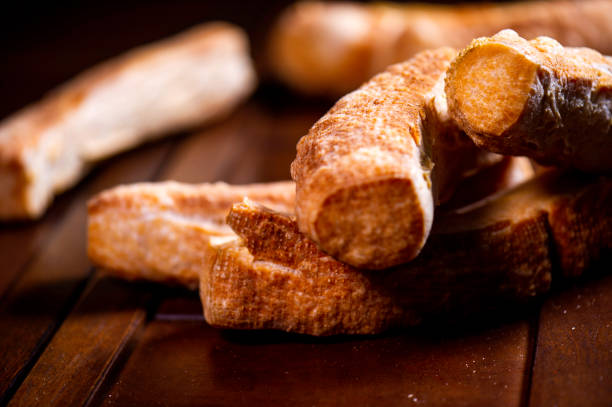Cooking meat perfectly is kinda like trying to get the perfect selfie — you think you nailed it, but one tiny misstep and it’s just…meh. I’ve been there, trust me. I’ve burned more chicken than I care to admit, and don’t even get me started on steak. But after a ton of trial, error, and a bit of YouTube binge-watching at 2 a.m., I’ve kind of cracked the code for getting that golden, crispy exterior while keeping the inside juicy.
Why Crispy Matters More Than You Think
Okay, so here’s the thing. Crispy meat isn’t just about looking fancy on Instagram (though, let’s be real, we all love a good food pic). It’s actually a science. The Maillard reaction — that’s the fancy term chefs throw around — is basically your meat getting a caramelized, flavor-packed makeover. It’s why a roast chicken smells like heaven when it comes out of the oven. You can literally smell your dinner before you taste it, which is kind of magic if you think about it.
The Moisture Trap
One mistake a lot of people make is trying to cook meat straight outta the fridge. I get it, sometimes you’re hungry and impatient. But cold meat meets hot pan and… disaster. The inside stays raw while the outside burns. You need to let it come to room temp, even if it’s just for 20-30 minutes. It’s like letting your phone charge before going on a long call — it just works better.
Another thing — water is the enemy of crispiness. I know it sounds obvious, but seriously, if you don’t pat your meat dry, you’re basically asking for steam instead of crunch. I once skipped this step thinking “meh, it’ll be fine,” and ended up with sad soggy chicken that made me reconsider all my life choices.
Heat Game Is Real
People underestimate heat like crazy. Too low, and your meat cooks slowly but never gets that crunch. Too high, and you get a burned outside with a raw heart. It’s a delicate dance, honestly. I usually start with high heat to get that initial sizzle — you know that “ssss” sound that makes you feel like Gordon Ramsay is watching you — and then drop it down a bit. It’s like the meat version of a rollercoaster: start fast, then cruise to finish.
Oil and Butter Are Friends, Not Foes
Everyone has that panic moment, staring at the pan thinking “how much oil is too much?” Truth? You need a bit. Oil is your conductor, helping heat distribute evenly and making the crust happen. Butter is the flavor fairy dust. Toss a pat in near the end and baste the meat. I promise, it’s basically magic. I even saw a TikTok once where some chef added a sprig of thyme to the butter and called it “aromatic perfection.” Fancy? Yeah. Effective? Absolutely.
Resting Is Key, Seriously
Here’s where patience comes into play. Everyone wants to cut right into meat as soon as it’s out of the pan. Don’t. Let it rest. I know it’s tempting, especially if your stomach is growling louder than a bass at a concert. But resting lets the juices redistribute. Slice too soon, and you’ve got sad, dry meat. Wait like 5-10 minutes, and you’re basically a culinary wizard.
Small Tricks That Make a Big Difference
A trick I’ve learned from my clumsy cooking days: score thicker cuts of meat. Like, make tiny little cuts on the surface. It lets seasoning sink in and prevents curling, which annoyingly happens when meat is stubborn and just wants to shrink on you. Also, salt early. I know some chefs swear by last-minute salting, but for me, giving meat a good 30 minutes with salt before cooking is like giving it a mini spa session. It pulls out some moisture, dries the surface, and helps with that golden crisp.
Another thing — don’t overcrowd your pan. I get it, sometimes you’re feeding a small army or you’re just lazy. But crowding traps steam. You’re not roasting, you’re boiling, and that’s basically the opposite of crispy. Give each piece a little personal space. Think of it like social distancing for meat.
The Digital Cooking Vibe
Honestly, online chatter helps too. Scrolling through Reddit threads or foodie TikTok recipes, you start noticing patterns: people obsess over pan temp, resting time, oil type. It’s kinda funny seeing everyone have the same “why is my meat not crispy?” moment. Makes you feel like you’re part of this secret crispy club.
The Human Experimentation
I’ll admit, some of this is trial and error. Sometimes I overdo it and get that extra-crispy-but-slightly-charred effect. Sometimes it’s underdone and I have to pop it back in. But the joy is in experimenting. Treat it like a mini science project every time you cook. Watch the sizzle, smell the browning, and learn from your mistakes. Cooking meat isn’t just about feeding your stomach, it’s about flexing a little kitchen skill and impressing anyone who happens to wander into your kitchen.

